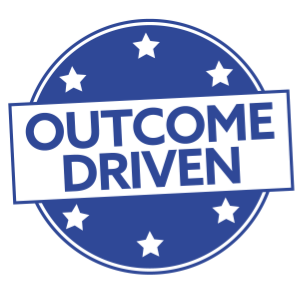Is There A Way To Replace Aging AutoMax DCS And Reliance Drives Without Unreasonable Downtime?
What Our Client Said
The AutoMax hardware in our product finishing line has been discontinued, and one out of every two spare parts that we keep on hand for repairs is defective. Our systems are at risk due to obsolescence. In addition, according to the OEM, the only way to migrate the system was by using their proprietary hardware, software and engineering services.
What We Heard
We need a seamless way to update the antiquated hardware and software used by our production line without significant disruption to our processes or extended shutdowns. This system should provide flexibility and independence without the constraints proposed by the OEM, making future updates simpler and allowing us to save on costs by utilizing local resources.
What We Did
LSI began by listening closely, then asking pointed questions. We determined that the ControlLogix L75 Processor and 1756 Remote I/O with a ProSoft Module bridge between PLC and DCS was the best solution.
To minimize disruption, we replaced the AutoMax system with ControlLogix hardware in phases, keeping the AutoMax components in operation throughout the process to act as a bridge between the old and new systems. In addition, LSI employed an innovative process that allowed the new hardware to “shadow” the existing system, allowing the CLX code to be validated prior to the final cutover.
LSI replaced 19 DC motors and drives with new Baldor Mill Duty Rated AC motors and PowerFlex 755 Variable Frequency Drives during a nine-day outage. 16 more were replaced in a second nine-day outage. Finally, a new “cockpit” approach was taken to the human machine interface (HMI). Four PanelView HMIs running FactoryTalk ME and three floor-located HMIs are all based on the same application, allowing for seamless rollout and changes via a bulk download to all units.
LSI Provided:
- Engineering, programming, design, project management, construction management, EPC, subcontractor management, safety management, production support, remote support and more
- Seamless transition between old and new systems
- Reliance AutoMax -> Rockwell ControlLogix
DCSNET -> Ethernet/IP
- Hardware and software installation and testing
- 19 DC motors replaced
34 new AC PowerFlex VFDs replaced a combination of Reliance AC & DC Drives and outdated UDC and PMI architecture
A complete redesign to the operator interface with 4 HMIs in a cockpit approach
- Custom-built HMI stands
The new product finishing line system consists of:
- ControlLogix L75 PLCs
- Baldor Mill Duty Rated AC Motors
- PowerFlex 755 VFDs
- Regenerative braking units
The Results Speak For Themselves
Maximized productivity with minimal disruption
Downtime was minimized thanks to installation in carefully planned phases
By utilizing existing equipment as a bridge, new controls could be tested prior to hardware conversion, giving the customer a sense of certainty
Once shadow mode and functional specifications were validated, AMX programming was significantly reduced (along with associated labor costs)
Reduced operational risks
- New hardware provides dependable service without the constant threat of outage
- Time devoted to maintenance was significantly reduced (no more need to salvage parts)
Improved control means improved operation
The new “cockpit” approach to HMI visualization makes control and monitoring easier
The streamlined application allows for global updates with little downtime
The new system now interfaces with existing Level 2 MES production data, allowing for integration with other plant systems
LSI Listened
LSI listened, then carefully planned a strategy for transitioning the customer’s aging technology to more modern, reliable controls.
Because we are an independent integrator, we were able to develop a solution that utilized the best mix of technology for the customer without regard to the manufacturer. We kept listening all the way through the 10,500 man-hours required to complete the project, offering new ideas, refining plans and working closely with the customer to ensure that the results improved their operation and achieved their goals.
A team approach paid off: 32 team members from all of LSI’s U.S. offices collaborated to provide engineering, design, programming, project management, machining and more.
